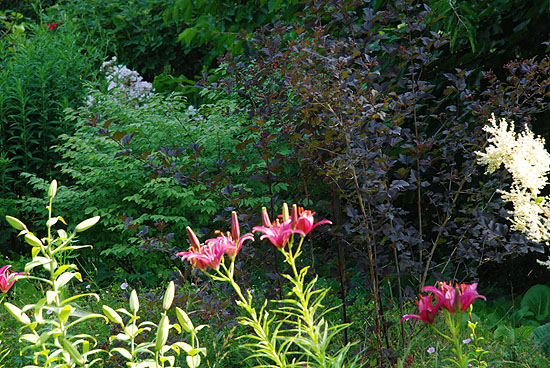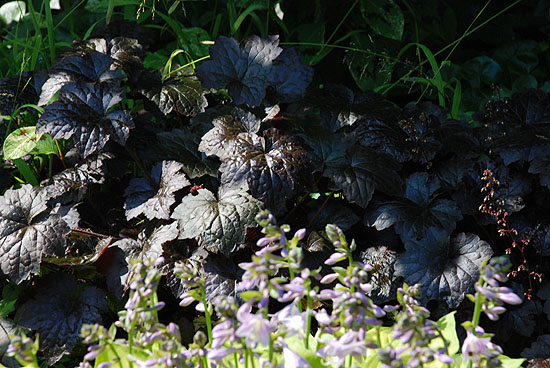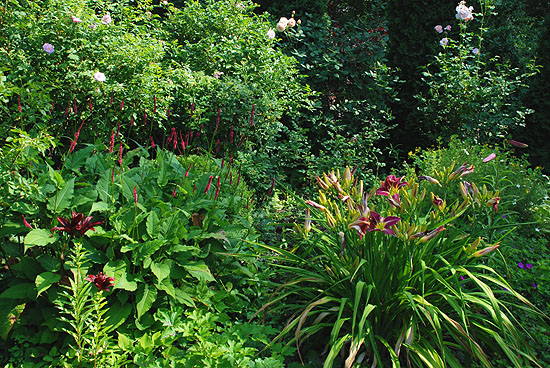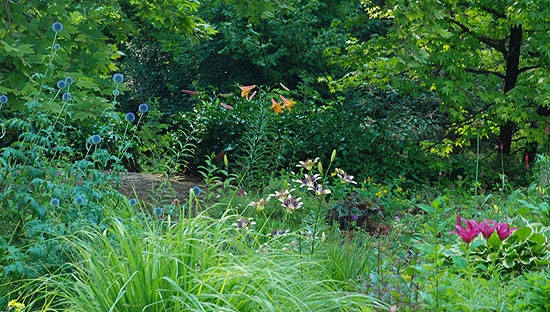
With the help of the cherry-red lily
in the previous post and the white Persicaria polymorpha, I can demonstrate not only the mass application of one element, but also the composition technique by virtue of which one or two colors – in our case, purple and white – appear in different forms.

If you want some purple in the garden, first of all you should choose a variety of purple leaves. We have this Physocarpus opulifolius 'Atropurpureus' shrub in the middle of the large upper perennial bed, which offers a great purple surface from spring till autumn.

From the perennials, purple-leaved Heuchera 'Palace Purple' (above) and Eupatorium rugosum 'Chocolate' both work well at us. I apply them in repeated patches in the garden.

The purple leaves of Eupatorium strengthen the purple hue of the flower of Persicaria amplexicaulis 'Firetail', planted next to it. The same flower would appear rather red when planted next to a yellow one.

The white flower of Lilium regale also has purple hues, which connect the purple and white elements.

The flower of Rosa 'Ballerina' and the pimp in the lower left corner play a similar function. Between them various shades of purple are repeated (the two lilies, Persicaria, and the red rose in the upper corner).

It is always very effective if similar colors appear in opposite forms, as in the thin flower of Persicaria and the wide one of Hemerocallis.

The Hemerocallis in the picture show various shades of purple with small formal and color differences, and these give a feeling of abundance.


Here, purple and white is repeated in various flowers and leaves.

Finally, let us see how one can overcome the duality of purple and white. The flower of Geranium 'Patricia' is in harmony with the lily’s purple, but it already has enough blue shades to also harmonize with the fine bluish-purple flowers of Campanula rotundifolia. And this coincidence already can invite into the composition the bluish flowers of Echinops banticus.

The next composition follows the same technique.

Here I used the bluish hue of the lily’s purple. As the two compositions are next to each other, they strengthen each other’s effect, and thus the Echinops fits nicely into the overall picture.

And if we did it all with enough discipline, then we can even allow ourselves to smuggle into the composition an orange lily (Lilium 'African Queen'), a counterpoint to Echinops both in its color and its form, by exploiting the purple shade which is present in its flower.



















